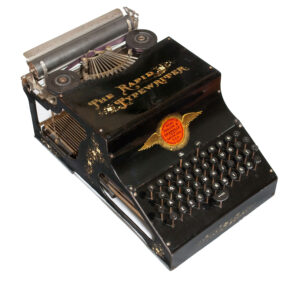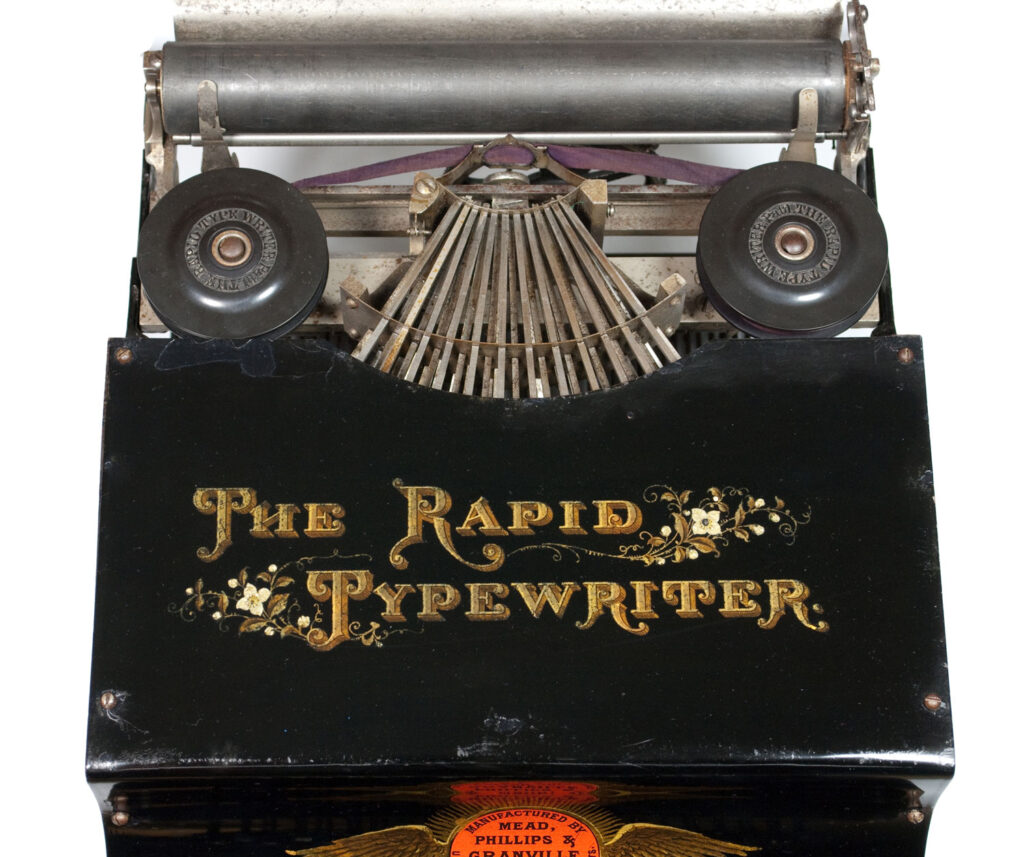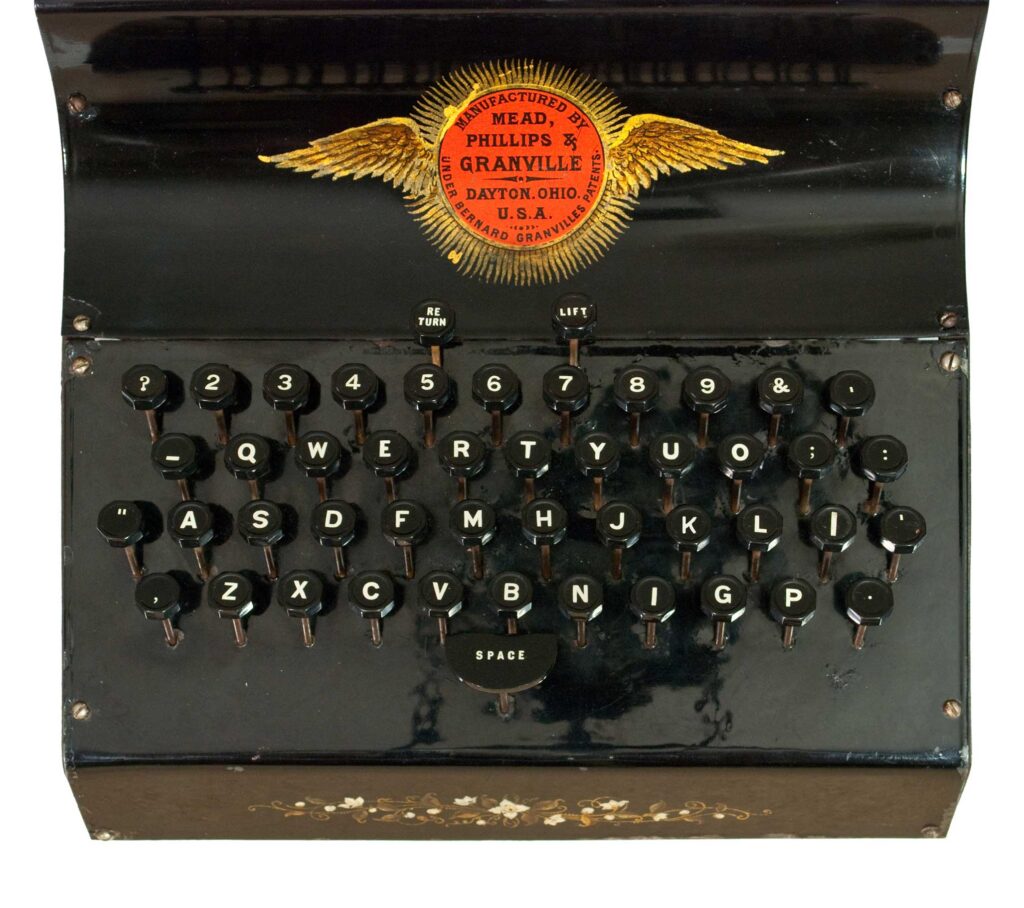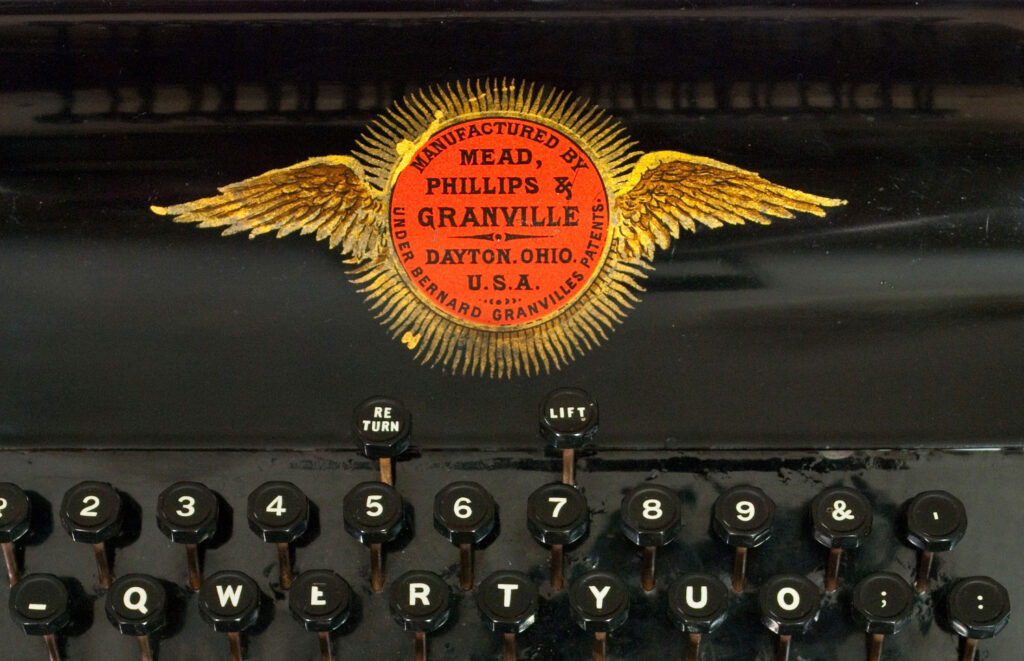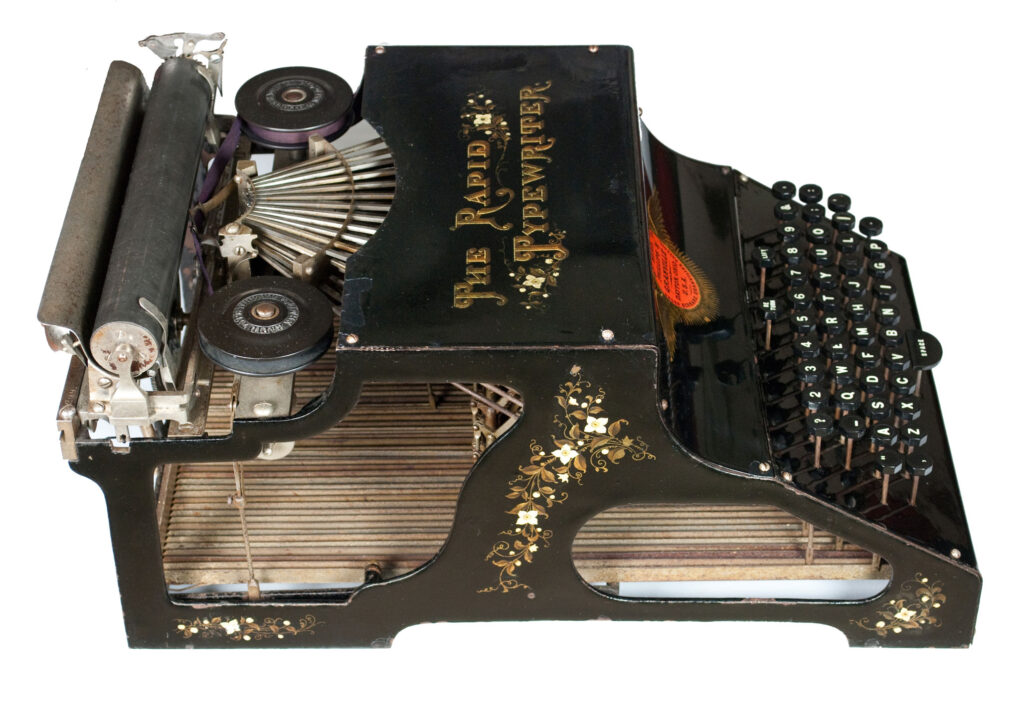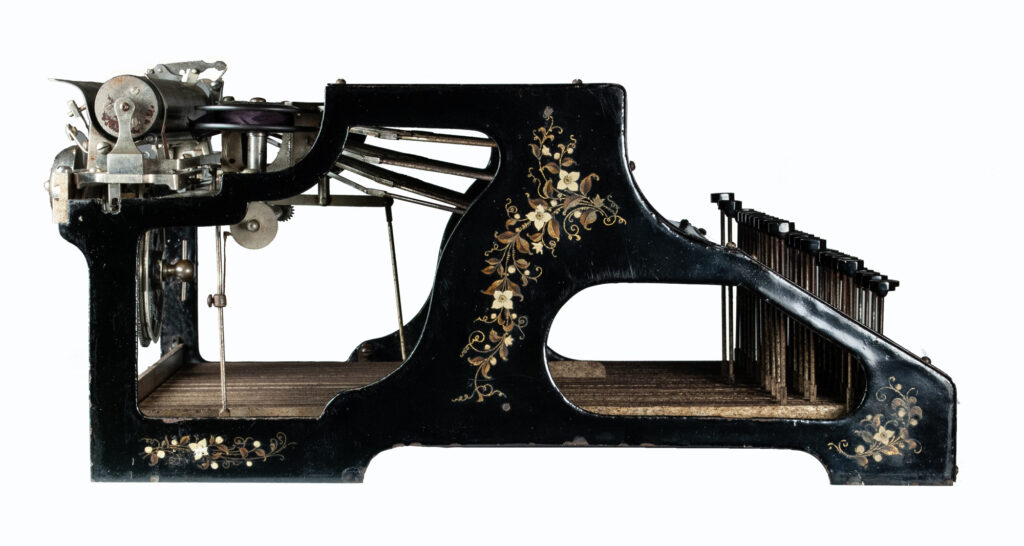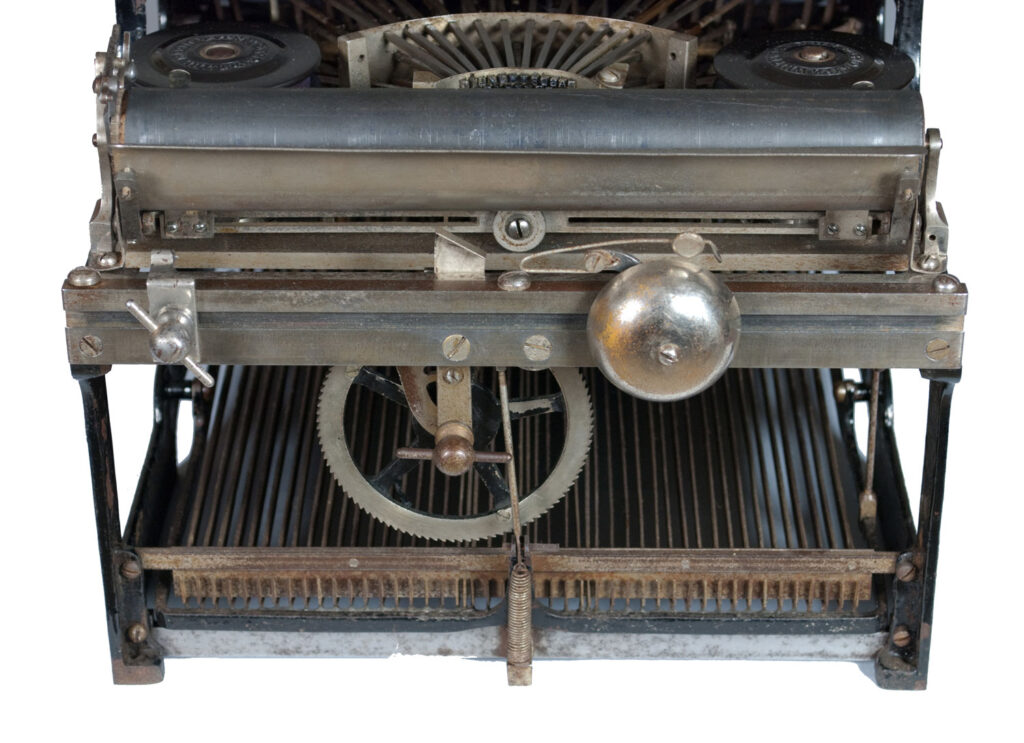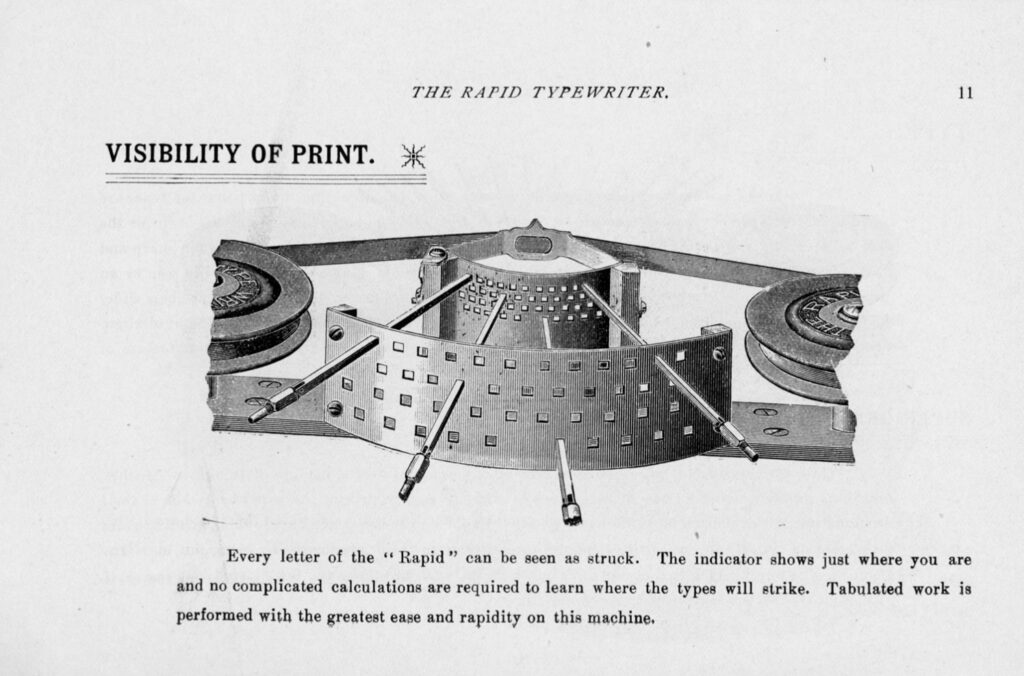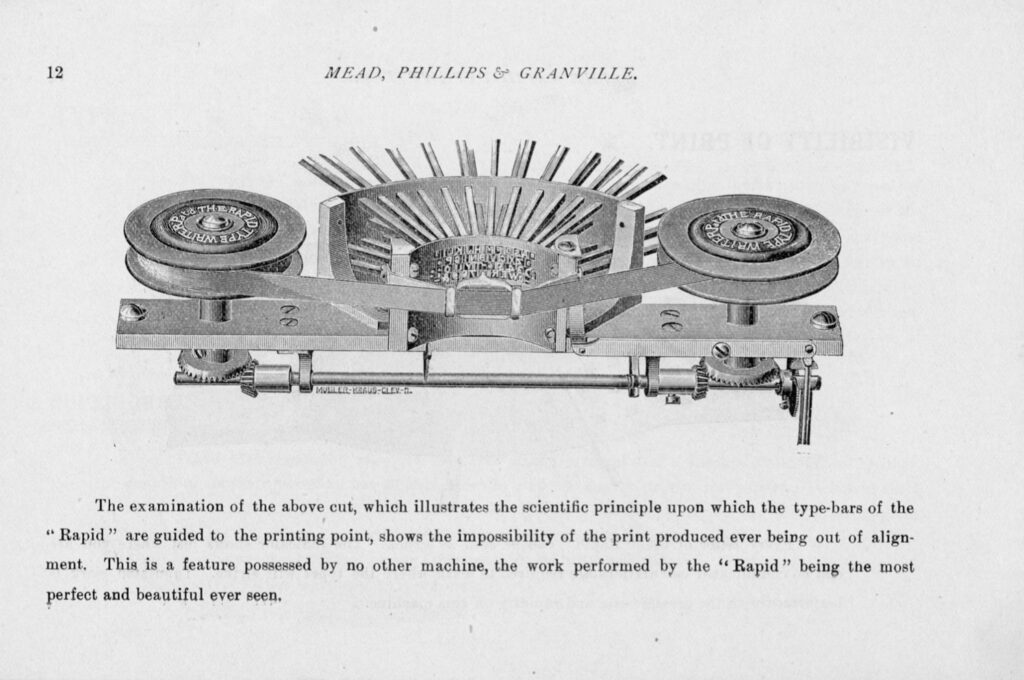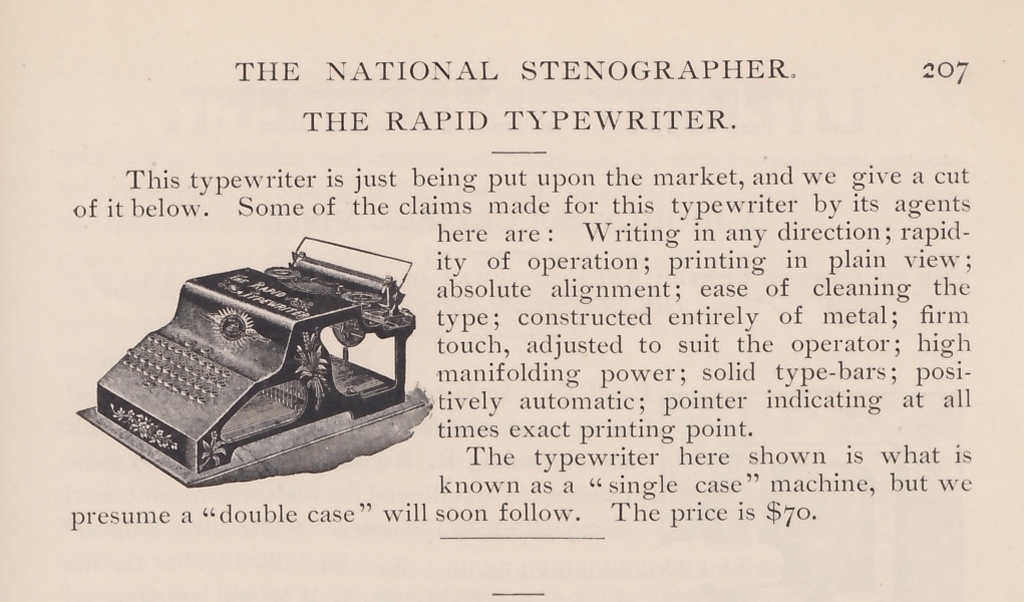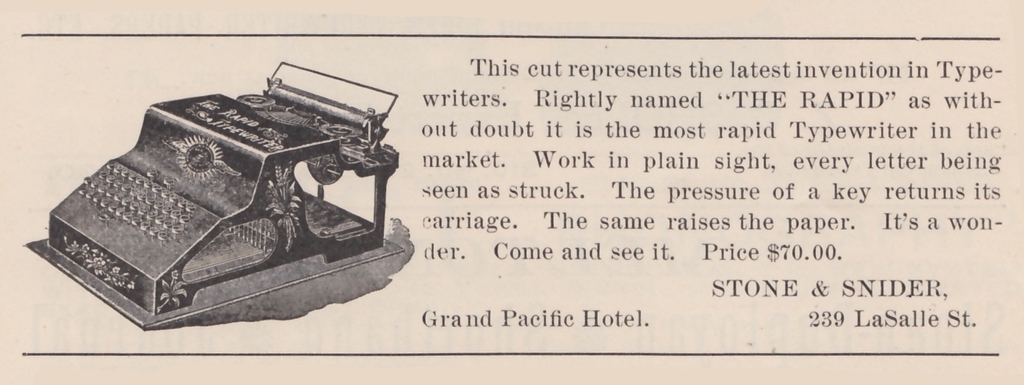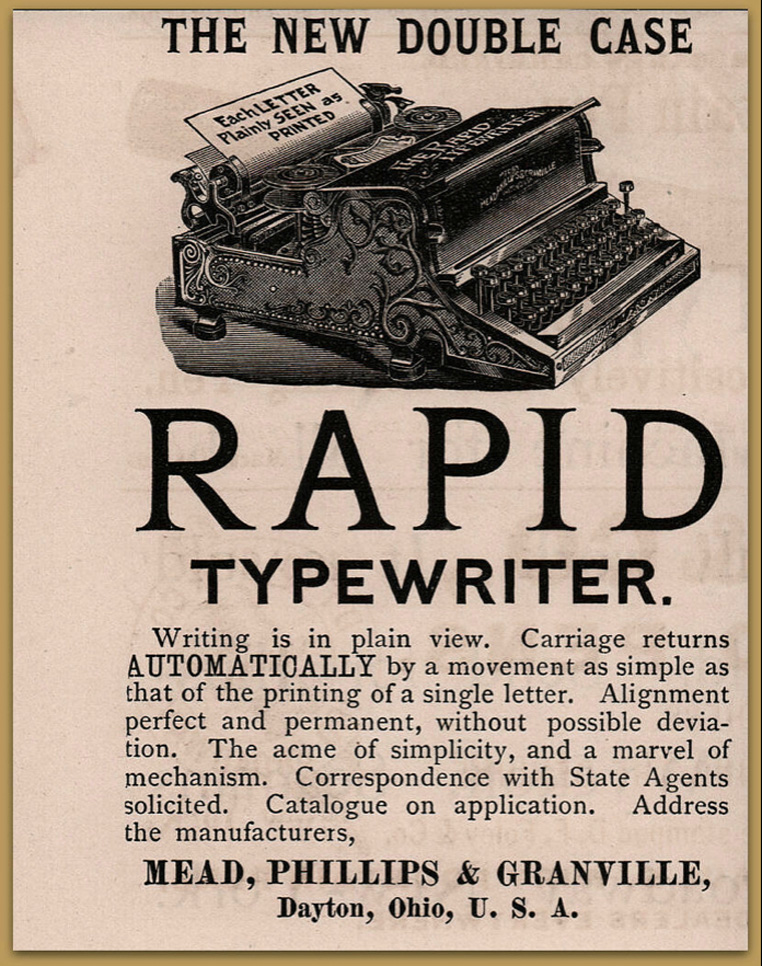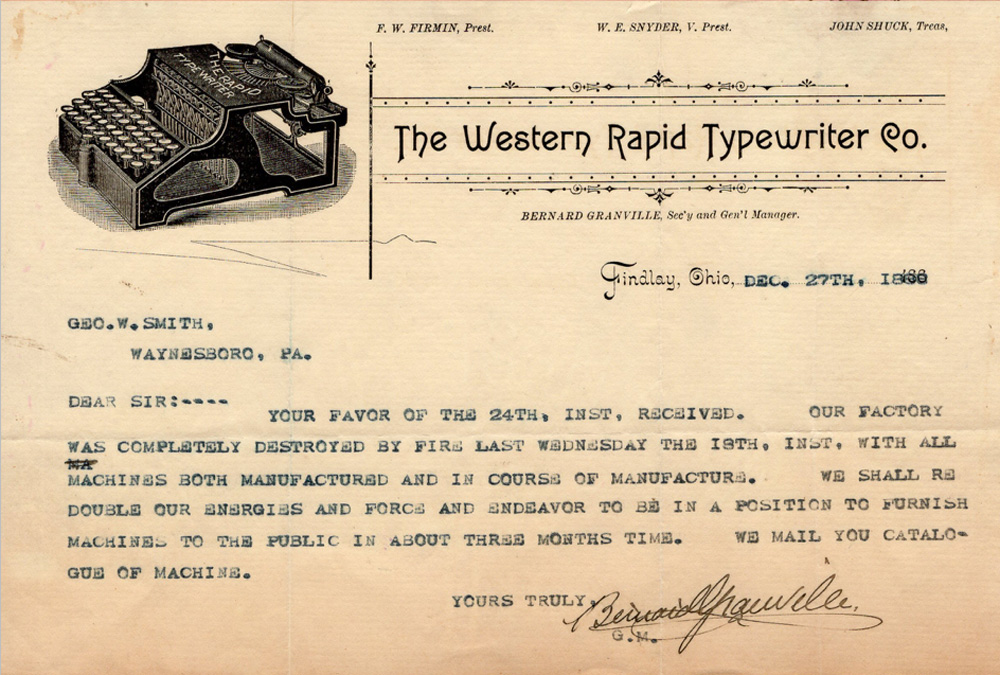‘Bernard Granville’s pioneering machine’ – An illustrated article
The Rapid holds a special place in history as the first typewriter to use thrust action typebars, a significant departure from the standard swinging typebars and single type elements found on contemporary machines. This thrust action concept would soon be adopted by one of the great typewriter pioneers, Wellington Parker Kidder, who just four years later developed one of the most successful typewriters of its time, the Wellington. This was followed by the Empire in Canada, the Adler in Europe, and eventually the Noiseless.
Granville’s motivation for developing the Rapid’s lateral thrust design was to create a typewriter with permanent printing alignment. Two illustrations below, from a rare Rapid manual (courtesy of the Peter Weil Archive), clearly show how the typebars are arranged for their lateral strike movement and precise alignment.
Although the Rapid appears solid and heavy, a side view (see image below) reveals it to be a surprisingly light and delicate machine.
The Rapid was first manufactured in Findlay, Ohio, in 1888, but that same year, a fire destroyed the factory. Shown below is a remarkable letter from Granville himself, referencing the fire (courtesy of the Peter Weil Archive). A new factory was built in Dayton, Ohio, and by 1890, production had resumed. Unfortunately, the Rapid Typewriter Company’s fortunes didn’t improve, the company went into receivership and was bankrupt by 1891.
The Rapid was also innovative in being one of the first typewriters to incorporate a ribbon vibrator, making it the earliest machine to offer full front strike visible typing, a feature that would be firmly established by the Underwood 1 in 1896 and continue for the next century.
Another standout feature of the Rapid was the typist’s complete control of the carriage via the keyboard alone. Two keys, positioned at the top of the keyboard (see detail image below), enabled this: the ‘Lift’ key advanced the paper to the next line, while the ‘Return’ key caused the carriage to swing automatically back to the right, ready for the next line. This meant an entire page could be typed without the typist ever removing their hands from the keyboard.
Despite its innovative features and remarkable design, the Rapid, limited to typing only in uppercase, quickly vanished from the market, but it was never forgotten.
